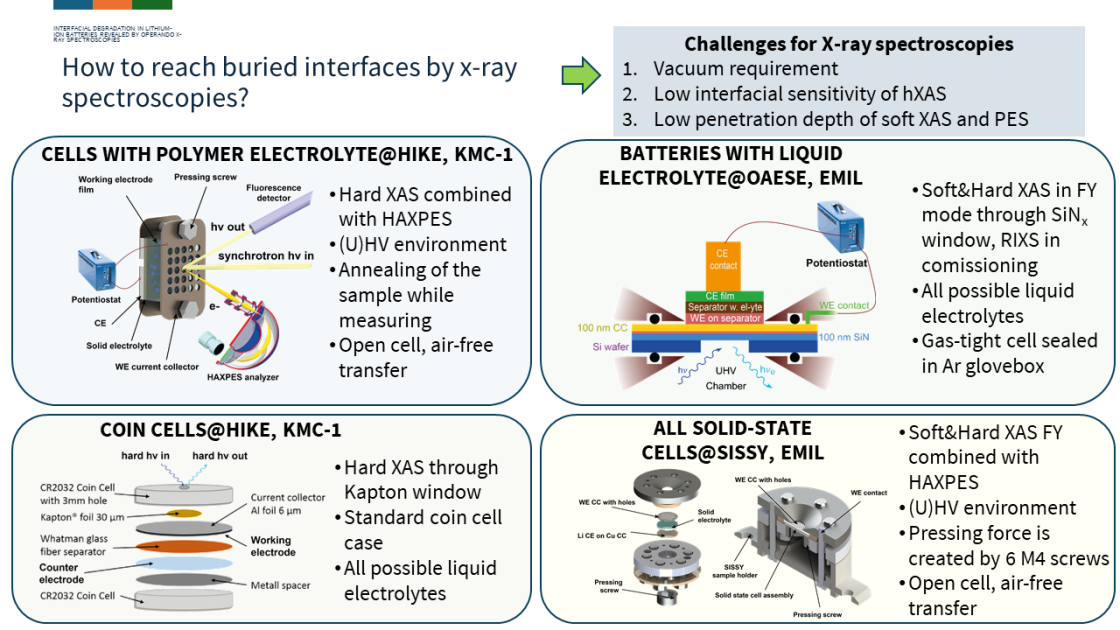Department Interface Design
Battery Materials Research
All batteries are based on electrochemical interfaces at which charge separation and chemical reactions occur. The evolution of the interfaces affects all the functional parameters of the device including power and long-term performance stability thus motivating us to study it. The combination of X-ray spectroscopies, such as XPS and XAS provides element-specific electronic and chemical structure information making them perfect tools for studying these interfaces. However, the real electrochemical interfaces are buried, so probing them in operating conditions is very challenging for the common sample environments. To be able to probe the buried electrochemical interfaces (at operating conditions), at the interface design department, we developed several sample environments, including:
- UHV compatible cells that allow to probe the interface between the polymer electrolyte and electrode materials through holes in a specifically designed current collector by operando HAXPES and hard XAS
- coin cells with Kapton window, that allow for monitoring bulk electrochemical reaction by operando hard XAS
- cells with a thin X-ray transparent SiN membrane to separate the UHV of the analysis chamber from the liquid electrolyte, allowing to collect operando soft XAS spectra in FY mode of the liquid electrolyte/solid electrode interface
- all-solid-state cells where the additional stacking pressure required for their operation is created between two thick steel plates. Here, we deposit on top of an electrode or electrolyte a metal film acting as current collector that is thin enough to allow photoelectrons to escape


